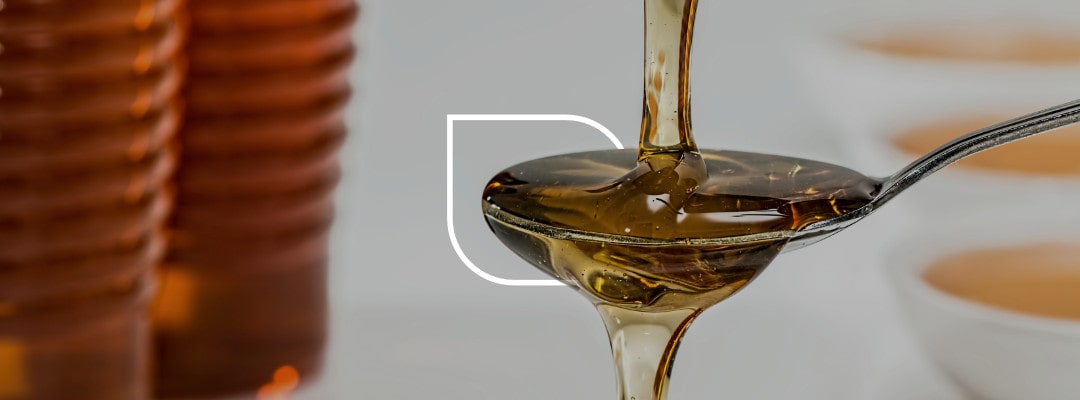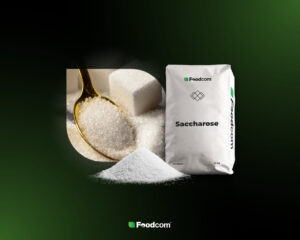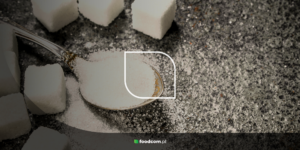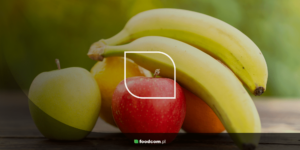- Sweeteners can be divided into two general categories: natural and artificial.
- Natural sweeteners include sugar and sugar alcohols.
- Artificial sweeteners include sucralose and aspartame.
- The benefits of using sugar substitutes include fewer calories and that they do not cause tooth decay.
The food industry is constantly changing and adapting to new trends and preferences. Although sugar is one of the most commonly used sweeteners in the food industry and can be found in a wide variety of products, from candy and baked goods to beverages and condiments, there has been a recent increase in demand for alternative sweetening options.
There are several natural sweetener alternatives that can be used to replace sugar. In this article, we present a comprehensive guide to sugar alternatives used in the food industry. If you want to know more about their properties and applications, be sure to read on!
Sweeteners and sugar alternatives in food technology
There are different types of sweetener alternatives. They can be divided into two general categories: natural and artificial sweeteners.
Natural sweeteners are derived from natural sources – plants or fruits. These include sugar, of course, but also sugar alcohols, which can include Xylitol, Erythritol or Sorbitol. Sugar alcohols are characterized by a sweet taste, but their calorie content is relatively low compared to carbohydrates such as Glucose or Fructose.
Artificial sweeteners are obtained through chemical reactions. These include Sucralose or Aspartame. They are usually much sweeter than sugar.
Another sweetener worth mentioning is Glucose-Fructose Syrup. It is made from natural sugars, but synthetic substances are also used in its production and its extraction is subject to a complex industrial process.
The use of sugar substitutes has many advantages. They are lower in calories than simple sugars and do not cause tooth decay, which can harm your overall health. Therefore, they can be used in diet foods or those designed for diabetes.
Examples and uses of natural sweeteners
Sorbitol
Sorbitol is a chemical compound belonging to the group of sugar alcohols. It is produced by the reduction of glucose under high temperature and pressure or occurs naturally in dried fruits. Sorbitol is also known as D-glucitol and its food additive code is E420.
Sorbitol is a white powder or granules with a sweet taste and a cooling effect in the mouth. It has a sweetening degree of 50-60% of sucrose and is easily soluble in water and stable at high temperatures. Its hygroscopic properties make it a moisture stabilizer, so it is used not only as a sweetener but also as a bulking, stabilizing and moisturizing agent. Sorbitol also acts as a preservative by inhibiting the growth of bacteria and microorganisms.
Sorbitol is widely used in the food industry as a sugar substitute and moisture stabilizer, especially in products for diabetics. It is also found in low-calorie products such as protein bars and sugar-free beverages. In confectionery, Sorbitol prevents moisture loss and is added to cakes and chocolates to prevent them from becoming hard and dry during storage.
Xylitol
Xylitol is a naturally occurring organic compound derived from reduced xylose and found in certain fruits such as plums, strawberries, blueberries and raspberries. It is usually obtained by industrial processes, either by reduction of xylose or by the use of Candida guilliermondii yeast. Birch sugar is another name for Xylitol, as it was historically derived from birch trees. It is also designated with the code E967.
Xylitol is a white, crystal-like substance that dissolves easily in water. It has fewer calories than sugar and a low glycemic index, although it tastes sweet. In addition, it has anticorrosive properties and produces a cooling sensation in the mouth when consumed. When used in jellies or jams, it can reduce the effectiveness of gelling agents. In addition, it can withstand high temperatures without losing its properties and does not caramelize.
Xylitol is found in various foods, including candies, chocolates, chewing gum and low-sugar desserts. The low calorie content of Xylitol makes it a popular additive for low-sugar diet products such as dairy products, jams, jellies, ice cream and baked goods. In addition, Xylitol is used in the confectionery sector because it retains its properties even at high temperatures.
Erythritol
Erythritol is a natural organic compound commonly added to foods as a sweetener and is listed in the European Union under the code number E968. It is naturally present in various foods such as fruits, fermented foods, algae and red wine. It can also be produced by the fermentation of glucose.
Erythritol is not as sweet as sugar, but contains no calories. It does not cause a rise in blood sugar levels and does not contribute to tooth decay.
Erythritol is a sweetener commonly used in low-calorie and sugar-free foods such as chocolate, candy, yogurt and jelly. It helps make these foods sweeter without adding many calories. Erythritol also adds volume to foods, reduces moisture absorption and improves the texture of baked goods and candies. It is often used to mask bitterness in sugar-free beverages and soften chewing gum and candies.
Glucose
Glucose is a simple sugar commonly found in nature. It is found in fresh fruits, especially grapes, bananas or plums, in honey and in many starchy products.
Glucose is rich in calories. It not only increases the degree of sweetness and improves the taste, but also improves viscosity.
Glucose is used in the confectionery industry, in various sweet treats such as candies, ice cream, desserts, creams, jellies, jams, as well as in a variety of beverages.
Fructose
Fructose, commonly called ‘fruit sugar,’ is a type of simple sugar found mainly in fruits. However, it can also be found in other sources such as honey, flower nectar, and vegetables. In the food industry, fructose is also known as E420.
Fructose is known for its sweet taste, which is even sweeter than that of glucose and is considered the sweetest of all natural sugars. It has strong hygroscopic properties.
It is not only used as a sweetener, but also has preservative properties in the food industry. Due to its hygroscopic properties, it is useful in prolonging the shelf life of baked goods by protecting them from drying out. Fructose also helps to keep the texture of ice cream smooth and to prevent confectionery from becoming too dry or forming crystals.

Examples and uses of artificial sweeteners
Sucralose
Sucralose is a type of artificial sweetener known in the food industry as E955. It is derived from sucrose and produced by the process of chlorination.
Sucralose is about 600 times sweeter than regular sugar. It is highly soluble in water and resistant to low and high temperatures.
Sucralose is widely used in the food industry, especially in low-calorie products aimed at diabetics. It is found in various products, including diet foods, frozen foods, dairy products, desserts, jellies and chewing gum. Due to its excellent solubility, it is a suitable sweetener for beverages. Due to its ability to withstand high temperatures, it is often used to sweeten baked goods.
Aspartame
Aspartame is an artificial sweetener known as E951. It is a chemical compound that belongs to the group of peptide esters.
Aspartame is a low-calorie sweetener that is 200 times sweeter than sucrose. However, it is not suitable for baking because it decomposes at high temperatures.
Aspartame is frequently utilized as a substitute for sugar or fat. It is commonly used by people with diabetes. Some of the products that contain this sweetener are flavored mineral waters, yogurts, isotonic drinks or sweetened sodas.
Glucose-Fructose Syrup
One of the most commonly used sweeteners is the Glucose-Fructose Syrup, also known as High-Fructose Corn Syrup (HFCS). This syrup is made by enzymatic or acid hydrolysis of starch, usually Corn Starch but occasionally Wheat Starch. Glucose-Fructose Syrup is generally 42% to 55% Fructose, with the remaining portion being Glucose.
The main characteristics of Glucose-Fructose Syrup are its sweet taste and syrup form, which is useful in the food industry because it can be easily mixed without the need to dissolve it. It enhances the flavor and color of products and also affects the texture by making them moister and shinier. Glucose-Fructose Syrup also provides better stability and longer shelf life of products, as it prevents food from sticking to the packaging.
Glucose-Fructose Syrup is easier to mix with beverages than sugar and is therefore widely used in the food industry. In confectionery, it prevents crystallization when added to jams, candies or ice cream. In baked goods such as cookies and cakes, it provides moisture and softness. It is also used in candies that require a glossy appearance, such as frosting or lollipops. In addition, this syrup is found in bread, canned foods, dairy products such as yogurt and in the preparation of various sauces such as ketchup, mustard and marinades.
Why Foodcom?
Our great team of Sales Support will help our Traders conduct the contract and business deals in a smooth and efficient way to ensure the best quality service to all our Business Partners. Our logistics team will take care of transportation and the financial department will be responsible for all matters connected with the financial part of the deal. Do not hesitate! Contact us.








